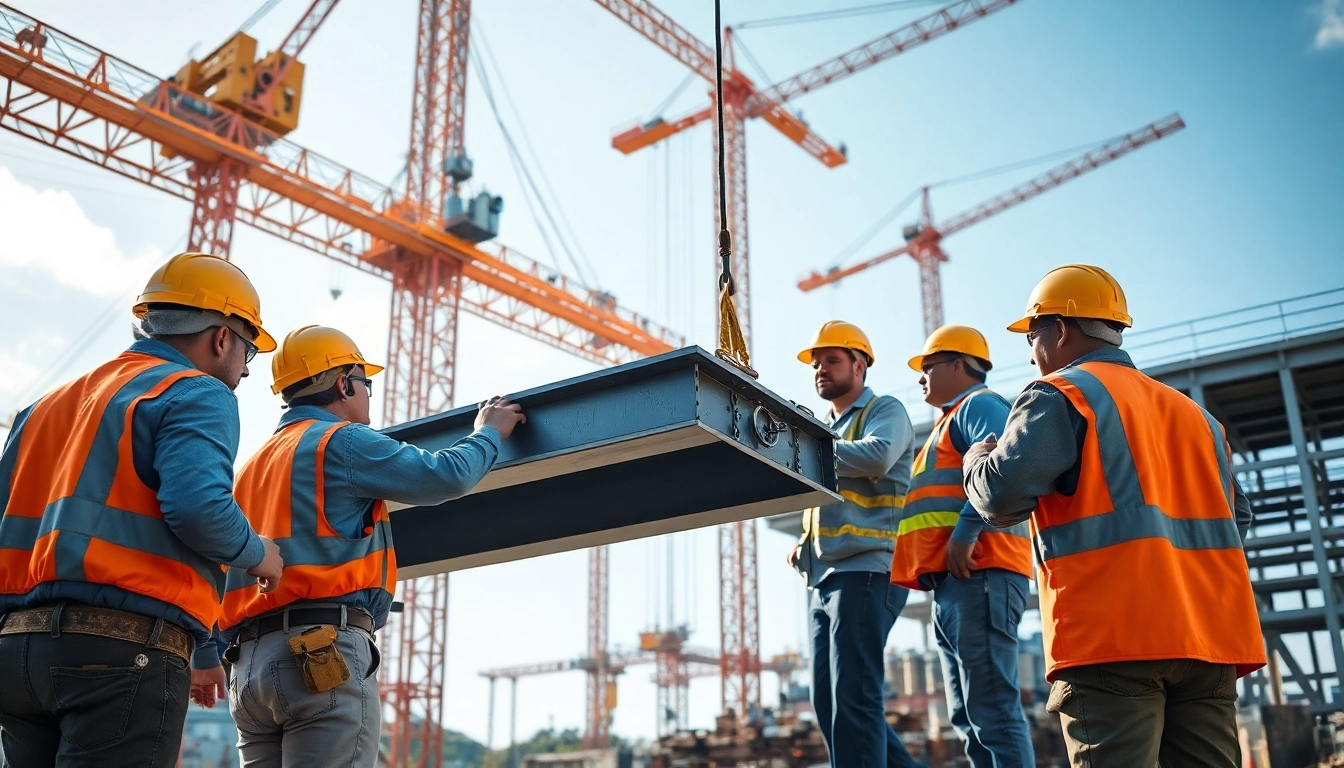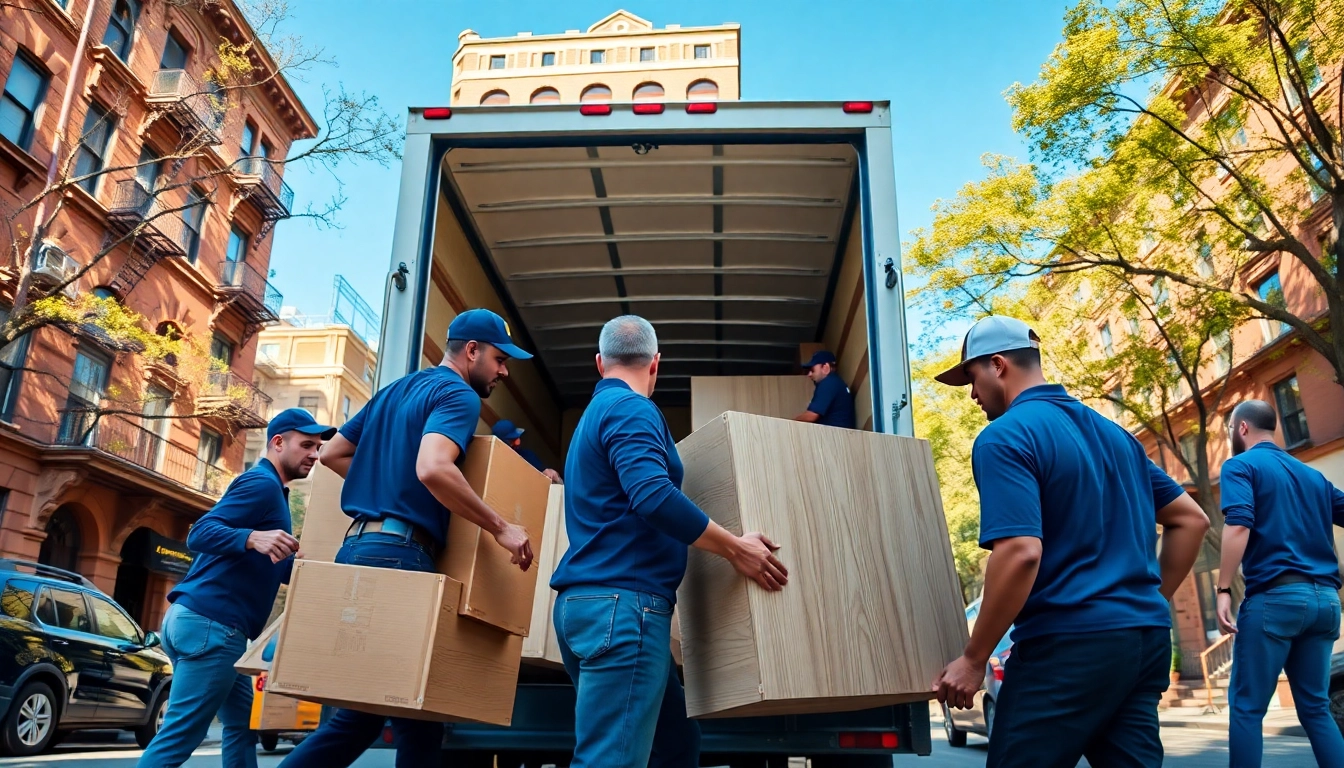
Understanding Structural Steel Installation
What is Structural Steel Installation?
Structural steel installation refers to the process of erecting and assembling steel structures to provide support and shape to buildings, bridges, and other infrastructures. This critical aspect of construction involves careful planning, precise execution, and a comprehensive understanding of engineering principles. The requirements of structural steel installation extend beyond mere assembly; they encompass everything from selecting appropriate materials to ensuring compliance with safety and quality standards. Effective structural steel installation is essential for the integrity and longevity of any facility.
Types of Structural Steel Used in Construction
Various types of steel are utilized in construction, each designed for specific load-bearing requirements and environmental conditions:
- Carbon Steel: The most common type, used for beams, columns, and reinforcements due to its strength and versatility.
- Alloy Steel: Contains additional elements to enhance certain performance characteristics, suited for high-strength applications.
- Stainless Steel: Known for its corrosion resistance, ideal for high-moisture environments, including coastal regions.
- High-Strength Low-Alloy Steel (HSLA): Offers improved mechanical properties and enhanced resistance to corrosion for structural applications.
The Importance of Quality in Structural Steel Installation
Quality control plays a critical role in structural steel installation. Inferior materials or poor installation techniques can lead to catastrophic failures, compromise safety, and incur significant costs for repairs or replacements. Adhering to guidelines set by organizations such as the American Institute of Steel Construction (AISC) ensures that installations meet or exceed industry standards. Implementing rigorous quality checks during both fabrication and installation stages will minimize risks and enhance the overall performance of the structure.
Planning for Structural Steel Installation
How to Create a Steel Installation Plan?
Creating an effective steel installation plan involves several key components:
- Project Scope: Define the overall objectives, dimensions, and specifications.
- Design Coordination: Collaborate with architects and engineers to integrate steel structures with other building materials.
- Resource Allocation: Identify required materials, equipment, and human resources, ensuring availability before commencing work.
- Timeline and Milestones: Establish a clear schedule outlining major tasks and deadlines to keep the project on track.
Key Calculations for Structural Steel Installation
Accurate calculations are essential for ensuring that steel structures can withstand applied loads. Key calculations include:
- Load Analysis: Involves determining the dead load, live load, and environmental load the structure will experience.
- Deflection Calculations: Ensures that the steel will not experience unacceptable deformation under load.
- Connection Design: Involves calculating the strength and stability of connections between steel members.
Permits and Regulations in Structural Steel Installation
Prior to installation, it’s essential to adhere to local building codes and obtain the necessary permits. This process typically includes:
- Completion of Blueprints: Submit detailed drawings and calculations for approval.
- Inspections: Prepare for on-site inspections conducted by local authorities throughout the installation process to ensure compliance.
- Coordination with Regulatory Bodies: Engage with environmental, safety, and construction regulatory agencies to avoid legal complications.
Executing Structural Steel Installation
Preparatory Steps for Structural Steel Installation
Prior to beginning the physical installation, several preparatory steps must be taken:
- Site Preparation: Ensure the construction site is cleared, leveled, and equipped to handle heavy machinery and materials.
- Foundation Checks: Verify the load-bearing capability of the foundation and make necessary adjustments before installation.
- Material Inspection: Conduct a thorough inspection of steel components for defects or irregularities before they leave the fabrication facility.
Tools and Equipment for Effective Installation
A variety of tools and equipment are required for successful steel installations, including:
- Cranes: Essential for lifting and placing large steel beams and columns.
- Forklifts: Important for moving steel materials short distances on-site.
- Welding Equipment: Necessary for fabricating connections and ensuring structural integrity.
- Measuring Tools: Instrumentation for maintaining alignment and accuracy in installation.
Safety Best Practices in Structural Steel Installation
Safety should always be a top priority during structural steel installation. Adopting best practices can drastically reduce the risk of accidents:
- Personal Protective Equipment (PPE): Ensure all workers wear appropriate gear including hard hats, gloves, and harnesses.
- Training and Certification: Conduct regular safety training for workers handling equipment like cranes and forklifts.
- Emergency Protocols: Establish clear emergency response procedures in the case of accidents or injuries.
Challenges in Structural Steel Installation
Common Issues Faced During Installation
Despite careful planning, challenges can arise during installation, such as:
- Weather Conditions: Adverse weather can disrupt timelines and safety.
- Supply Chain Delays: Delays in material deliveries can stall progress.
- Unexpected Site Conditions: Issues such as soil instability can require redesigning or modifying the installation plan.
How to Troubleshoot Structural Steel Installation Problems?
Effective troubleshooting strategies include:
- Regular Assessments: Conduct frequent site inspections to identify problems early.
- Collaborative Problem Solving: Foster communication between project managers, engineers, and on-site workers to formulate solutions efficiently.
- Contingency Plans: Develop backup strategies for anticipated challenges, ensuring the team remains prepared.
Risk Management Strategies in Structural Steel Installation
Implementing risk management strategies is vital for minimizing potential issues:
- Risk Assessment: Analyze all possible risks and implement mitigation strategies before initiating installation.
- Insurance Coverage: Ensure comprehensive insurance policies are in place to cover potential liabilities.
- Regular Training: Provide ongoing training for the workforce to stay updated on best practices and safety standards.
Evaluating Structural Steel Installation Success
Performance Metrics for Steel Installation Projects
Evaluating the success of a structural steel installation project can be measured using various performance metrics:
- Time Efficiency: Assess if the project was completed within the intended timeline.
- Budget Compliance: Analyze whether the installation stayed within the allocated budget.
- Structural Integrity: Conduct post-installation assessments to ensure the structure meets all design specifications.
Feedback and Documentation After Structural Steel Installation
Documenting the installation process and gathering feedback post-project is crucial for continuous improvement:
- Detailed Reports: Create comprehensive reports detailing the installation and any encountered challenges.
- Stakeholder Feedback: Solicit input from all stakeholders including contractors, engineers, and clients towards future operational enhancements.
- Post-Project Review Meetings: Conduct meetings to review lessons learned and identify areas for improvement.
Continuous Improvement in Structural Steel Installation Practices
To maintain competitiveness in the construction sector, adopting a culture of continuous improvement is essential:
- Regular Training Programs: Encourage ongoing education for workers on new technologies and methodologies.
- Lean Construction Techniques: Implement methods to minimize waste and enhance efficiency during installation.
- Feedback Implementation: Act on feedback and lessons learned to refine installation processes continuously.







